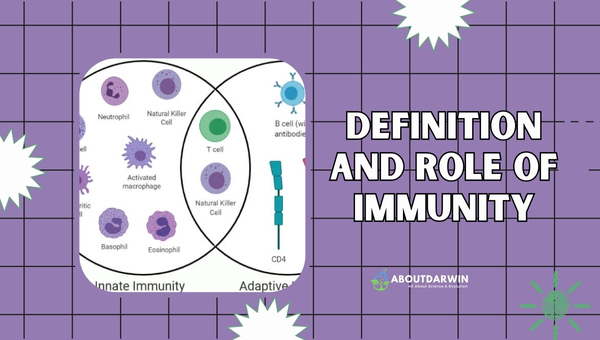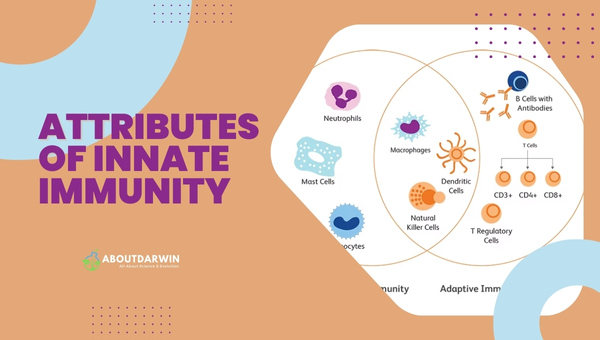Physical Address
304 North Cardinal St.
Dorchester Center, MA 02124
Have you ever wondered what magic happens inside your body when a germ invades? Or how does your body remember a past invasion and swiftly launch an attack upon a second exposure? Well, that’s all courtesy of our mighty defense system – the immune system. As mysterious as it might seem, it is fundamentally broken down into two components: Innate and Adaptive immunity.
In layman’s terms, think of them like home security. Innate immunity is like your fences and locked doors – always there, providing general protection against anything that seems out of place.
On the other hand, adaptive immunity works like an alert security guard who recognizes known intruders thanks to his ‘blacklist’ (immune memory) and optimizes the defense accordingly each time. In this article, we’ll delve deeper into these two fascinating aspects of the immune response and square up innate versus adaptive immunity.
Contents
The concept of immunity refers to our body’s ability to protect itself from harmful substances like bacteria, viruses, and toxins that invade it. It’s much like an incredible army within us, dedicated to guarding against invasions by harmful intruders aiming to affect our health.

Immunity is crucial because it’s specifically designed with the impressive task of distinguishing between our tissue and foreign cells – this recognition allows it to destroy any invaders while leaving the body’s cells undamaged.
It wins this battle against infections and diseases by launching a two-pronged attack: first comes the innate immunity, which is more general, springing into action immediately upon intrusion. This is followed closely by adaptive immunity, which is slower but much more efficient as it remembers past offenders, offering strong protection when faced with repeated threats.
So fundamentally, without an immune system in place or with a compromised one, we’re left defenseless against diseases from common ones like flu or more critical ones such as meningitis and encephalitis.
Also Read: Streptococcus Canis: Biochemical Test & Identification
| Innate Immunity | Adaptive Immunity | |
|---|---|---|
| Response Time | Rapid (minutes-hours) | Slow (days-weeks) |
| Specificity | Non-specific | Highly specific |
| Memory | No memory | Long-term memory |
| Cells involved | Phagocytes, NK cells, dendritic cells etc. | Lymphocytes (B & T cells) |
| Principle Mechanism | Physical and chemical barriers, inflammation, phagocytosis. | Antibodies and cytotoxic T-cells, immune tolerance. |
| Resistance Range | Broad range: Bacteria, viruses, fungi and parasites etc. | _Narrow range: Can only combat previously encountered pathogens. |
Innate immunity, also commonly understood as natural or native immunity, serves as our body’s initial line of defense against varied invaders.
This web of defenses we’re born with is fascinating. It’s always present in our bodies, ready to swing into action at the first sign of any foreign intrusion. The essential purpose? To keep harmful pathogens at bay.
In this section, we will discuss the key characteristics, or attributes, of innate immunity. A fundamental part of our immune system, innate immunity comprises the body’s initial response to pathogens.

It acts as our first line of defense against infections or diseases and has several unique attributes that make it a robust and efficient system.
Key attributes of innate immunity include:
These traits combine to provide an immediate, albeit non-specific, defense against harmful pathogens. Considering their crucial role in maintaining health, understanding these features can provide insights into how our immune system works to protect us from diseases.
Also Read: Coombs Test: Unraveling Its Principles, Types & Procedure
Let’s now move on to adaptive immunity, a kind of specialized squad on the immune system front. As the name suggests, this system “adapts” its response with each new exposure to various pathogens.
This highly intelligent branch of our immune system molds itself over time and ‘learns’ from each encounter with foreign substances. The real charm of adaptive immunity is that it’s not static; it evolves and adapts, hence providing us with specific and long-lasting protection.
Also Read: How Long Does MyHeritage DNA Test Take to Provide Result?
The adaptive immune system takes over if the innate immune system is not able to destroy the germs. It specifically targets the type of germ that is causing the infection.
Adaptive immunity is initiated when an innate immune response fails to eliminate a new infection, and antigen and activated antigen-presenting cells are delivered to the draining lymphoid tissues.
The innate responses call the adaptive immune responses into play, and both work together to eliminate the pathogens (Figure 24-1). Unlike innate immune responses, the adaptive responses are highly specific to the particular pathogen that induced them. They can also provide long-lasting protection.
Physical barrier. The innate immune system provides the first line of defense, which is divided broadly into two categories – physical/chemical barriers and nonspecific resistance.
In conclusion, understanding the distinction between innate and adaptive immunity is crucial for recognizing how our bodies fend off various diseases, including serious conditions like meningitis and encephalitis. The immune system’s complexity, with its two complementary yet distinct branches, signifies its essential role in maintaining our health.
Each person’s immune system operates as an outstanding guardian, protecting us from numerous potential threats daily.
Remember that having adequate knowledge about your body’s defense mechanism can empower you to make more informed decisions about your health and well-being. Let’s appreciate this phenomenal biological fortress working relentlessly to keep us safe.